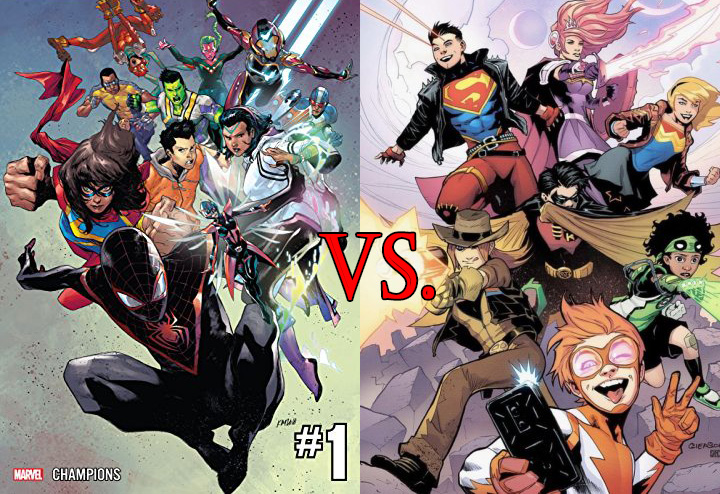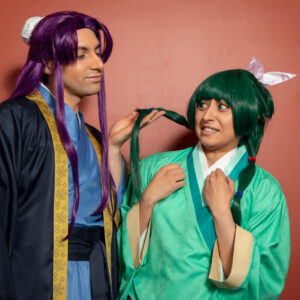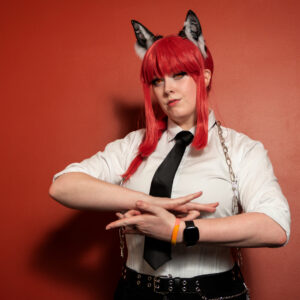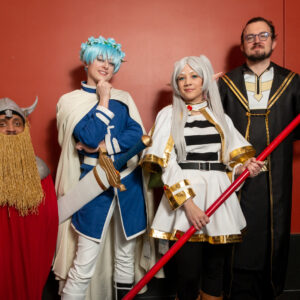Who Wins the Marvel vs. DC Battle of Teen Comic Relaunches?

Both Marvel and DC this month relaunched a comic book featuring a cast of young heroes, each starting again at No. 1, and each with both familiar and new characters. So, between Young Justice No. 1 and Champions No. 1, which book wins the battle for the hearts and minds of young — and not so young, like me — comic book readers?
Champions was first out of the gate, launching its new run, Volume 3, last Wednesday, Jan. 2. The writer is Jim Zub, a young man with a pretty deep history of short runs and indie comics, that has led to bigger roles, such as taking over Uncanny Avengers for a six-issue run in 2017. At Marvel he may be best known for relaunching Thunderbolts and writing the first 12 issues of that Volume 3 starting back in 2016. Outside of the Big Two, Zub is known for writing licensed Dungeons & Dragons titles and for writing the first 20 issues of Samurai Jack, both at IDW.
Zub co-created the ongoing title Wayward, published by Image Comics, with Steven Cummings, the artist on Champions. Cummings has a much shorter CV than Zub, with some one-offs and short runs at the Big Two throughout the 2000s. Since Wayward launched in August 2014, he has almost exclusively worked on that book.
Cummings does a very good job on Champions. His art style is reminiscent of a less-polished Kevin Maguire. In one Champions No. 1 panel, some of the Champions, led by Locust, smash through a wall to attack bad guys. Her action pose is solid, and the poses and expressions of all of the Champions and the bad guys are varied and realistic. And he draws team leader Ms. Marvel very much like her artistic creator Adrian Alphona did, as opposed to some artists who treat her as just a brown-skinned version of a generic teen hero.
Young Justice debuted its new No. 1 today, with writer Brian Michael Bendis and artist Patrick Gleason. With the exception of one title at Marvel and one at Image, Gleason has almost exclusively worked on DC titles since he debuted in the early 2000s. His style is very much in the DC “heroic realism” style popularized by Neal Adams and continued by artists such as Ethan Van Sciver, albeit mixed with the more angular look and heavier line style of Chris Bachalo. In fact, there is a splash panel with Tim Drake as Robin and the new Bendis character Jinny Hex (yes, the great-times-three granddaughter of Jonah Hex) that looks like it could have been drawn by Bachalo himself (which is praise, not a complaint).
So with the art on both books being handled very well, it comes down to the writing. No surprise there, Bendis wins. To give credit where due, Zub does an excellent job handling the plotting and story of a Champions team with a much larger roster than previous versions, and larger than the new Young Justice (so far). But his interaction with artist Cummings doesn’t seem to be completely in sync. There is a splash page in Champions that indicates that things didn’t go completely well for the squad that Ms. Marvel and Miles Morales was on in their multi-squad first mission, but nothing further in that mission’s story backs that up until we see Miles having a grumpy fit, apparently in reaction to the mission. Add to that the fact that Zub writes the inevitable team conflict and drama like someone who has forgotten what it means to be a teenager and gets inspiration from old WB network shows, and you have a mixed bag — excellent plotting and good story, with moments of cringe-worthy dialogue.
Bendis’ much deeper experience shows in Young Justice. The interaction between familiar team members and between those that have just met is fun and believable (as much as that can happen with superheroes). And when it comes to conflict, he hints at some trauma in Wonder Girl’s past but keeps it at a hint, and has her work past it, at least for the time of the fight going on in issue No. 1. I want to know more about what, if anything, happened to Cassie Sandsmark, whereas with Miles and his problem in Champions, I kind just want to dope slap him and yell, “Man up!”
Young Justice also introduces the main villains (sort of) in what will be the first arc early on in this issue, and Bendis writes this team in a way that is very reminiscent of the testy relationship among the Shi’ar Imperial Guard from Marvel’s X-Men books. In contrast, what we can only assume will be the main villain of the Champions first arc is only introduced by Zub at the very end of the issue, and seemingly has no relation to the multi-squad mission that makes up most of the book.
Both Young Justice and Champions have strong relaunches on their hands, and Marvel and DC can be proud of both books. But in the ongoing battle between the Big Two comic publishers, DC wins by a neck, on the strength of the writing of Bendis. DC made a big deal about grabbing Bendis away from Marvel when it happened in late 2017, and if Young Justice is any indication, it was a grab worth making a big deal about.



